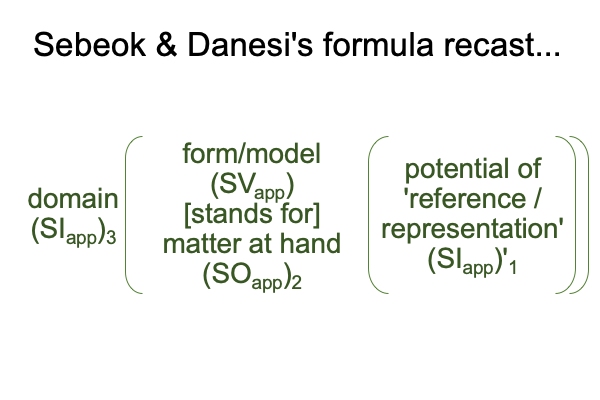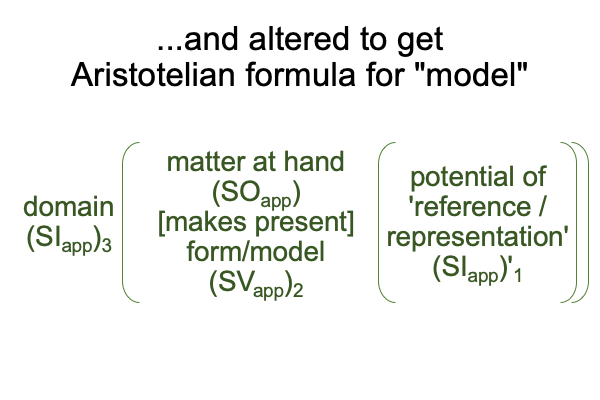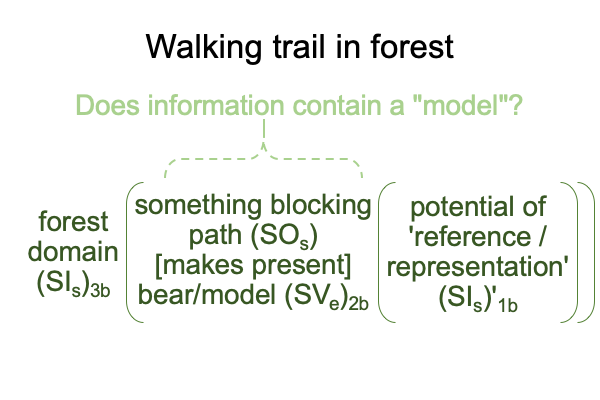0765 Section 17.2 deals with models.
Is it possible to couple concepts of modeling with semiotics?
Thomas Sebeok and Marcel Danesi collaborate on a book, titled Forms of Meaning: Modeling Systems Theory and Semiotic Analysis (2000, Morton de Gruyter, Berlin, Germany). They conclude that a model is a sign-vehicle (a form, real or imagined) that stands for a sign-object (referring to the matter at hand) in regards to a sign-interpretant (a referential domain).
Instead of “is”, may I say, “appears to be”?
0766 Sebeok and Danesi’s formulation of “model” as a sign-relation may be reconfigured into into a category-based nested form, where each categorical element takes on the appearance of belonging to a sign-relation.
0767 Here is a diagram.

0768 Notice that a simplification has occurred. For Sebeok and Danesi, a “model” mimics a sign-relation. In this reconfiguration, a form (SVapp) [stands for] matter at hand (SOapp).
Yes, a sign-relation simplifies into a hylomorphe.
The subscript says that “is” may be changed to “appears to be”.
0769 But, really – and this is a little confusing – I can configure the dyad another way, so that it looks even more like Aristotle’s hylomorphe of matter [substance] form.
In this switcheroo, a “model” is a hylomorphe where the matter at hand (apparent SO) [makes present] its form(apparent SV).
0769 Here is a picture.

0770 Does this make sense, especially when it comes to danger?
Well, how about an example?
I am walking on a forest trail. I can see, far up the trail, that there is something and it appears to be blocking the path. It is hard to determine what it is. But, if it is a bear, I am going to turn around before it sees me.
0771This fits a situation-level nested form.
Plus, a few caveats are in order.
Recall that the situation-level normal context3b and its potential1b contribute to a specifying sign-interpretant (SIs). The situation-level actuality2b goes contains the dyad, {SOs [&] SVe}2b.
Plus, for the S&T noumenal overlay, the situation-level2b actuality is labeled, “information2b“.

0772 This raises the questions, “Does information2b contain a ‘model’? Does that ‘model’ fit Sebeok and Danesi’s formulation of a ‘model as a sign-vehicle?”
